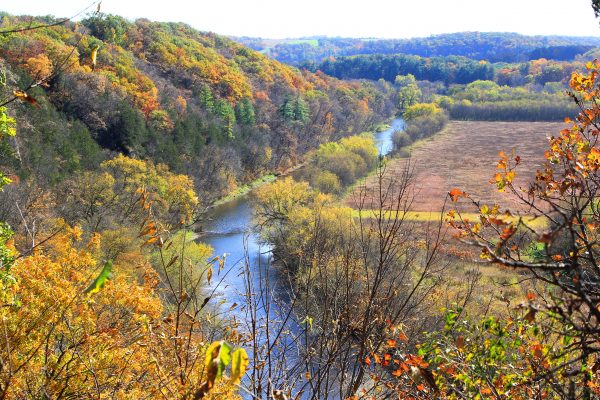
Photo Courtesy Larry Reis
According to Iowa DNR there have been 204 documented unique occurrences of threatened and endangered species and natural communities in the Iowa portion of the Upper Iowa River Watershed. The Iowa Natural Areas inventory (INAI) is a collection of threatened, endangered, special concern and selected rare species defined as unique. This data is available to the public via the Natural Areas Inventory Interactive Mapping. Species documented in Upper Iowa River Watershed counties include: Winneshiek County contains 130 unique listed species of plants, animals and invertebrates, Allamakee County is home to 171 unique listed species, and Howard County contains 69 unique listed species. According to the Iowa DNR Unique Listed Species Inventory, the greatest number of unique species found in the eastern portions of the watershed.
An interactive map showing specific species occurrence within each county in the watershed is available on the USGS BISON website
2.4.1
Mussel Species

Photo courtesy of iNaturalist
Some of these threatened and endangered species are mussels. According to a November, 2018 Iowa DNR study, Conducting Targeted Water Monitoring Studies to Measure Water Quality Success, (S. Hopkins) mussel populations in the Upper Iowa River and in Silver Creek in Howard County have been studied for several years. Between 1999 and 2000 studies were conducted by Dr. J.W. Eckblad through Luther College at dozens of sites. Dr. Eckblad conducted the studies through a grant from the Iowa DNR and ultimately published the results ,which documented the quality of the mussel beds and identified 10 live species of mussels in the UIR, including one species considered threatened. The Iowa DNR continued to study mussel populations in the UIR Watershed in 2012 and 2015. According to Jennifer Kurth, Iowa DNR Technical Development of BIological Impairments, “We surveyed 18 sites on the Upper Iowa River: 4 in Howard Co., 9 in Winneshiek Co., and 5 in Allamakee Co.” Six of the 18 sites were re-sampled from a previous survey completed in 1984 by Frest and in 1998 by Kelly Poole, which lead to the listing of three river segments on the Iowa DNR Impaired waters list. According to Kurth, Due to re-sampling in 2012-2015, “we were able to delist 1 of the 3 impaired segments on the Upper Iowa River.” Results from the 2012-2015 sampling showed 15 living species of mussels, including 4 species that are listed by the state of Iowa as threatened: cylindrical papershell (Anondontoidesferrusacianus), creeper (Strophitus undulatus), creek heelsplitter (Lasmigona compressa), and ellipse (Venustaconcha ellipsiformis). Additional information about these results and significance of these studies is available Here.
2.4.2
Fish
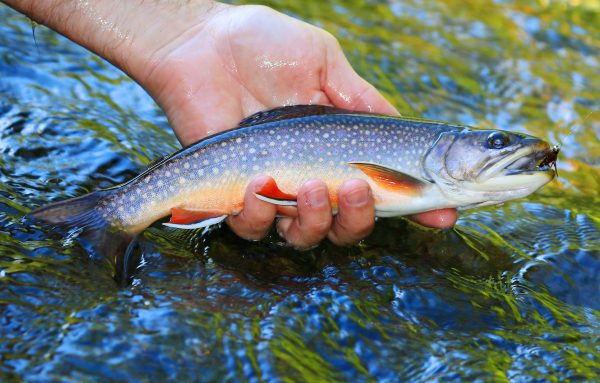 According to the Iowa DNR, 64 different species of fish have been identified in the Upper Iowa River (UIR) Watershed. This includes 13 different game fish species. They note that Smallmouth and Walleye are the most common warm water game species, while Brook, Brown, and Rainbow Trout are common cold water game species often associated with the cold water tributaries of the UIR and, under certain conditions, segments of the UIR itself.
According to the Iowa DNR, 64 different species of fish have been identified in the Upper Iowa River (UIR) Watershed. This includes 13 different game fish species. They note that Smallmouth and Walleye are the most common warm water game species, while Brook, Brown, and Rainbow Trout are common cold water game species often associated with the cold water tributaries of the UIR and, under certain conditions, segments of the UIR itself.
The last population of native Iowa Brook Trout in Iowa were found in the UIR Watershed in South Pine Creek, which is a small tributary in the Canoe Creek Subwatershed. This strain of Brook Trout was confirmed unique to Iowa through an Iowa DNR Fisheries genetic testing project completed in 2018. Although the South Pine Creek Brook Trout genetics are similar to other strains of Brook Trout from the Driftless Area of Wisconsin and Minnesota, it is unique in its own right. Since the holdout Brook Trout population was identified decades ago, Iowa DNR Fishery and Hatchery personnel have hatched, reared and stocked this genetically distinct strain into other cold water stream segments in Northeast Iowa, primarily into small, isolated, tributaries in the UIR Watershed where they will not be out competed by Rainbow and Brown Trout. Brook Trout are particularly sensitive to temperature and water quality. The Iowa DNR notes that Brook Trout are, “seldom found in water with temperatures higher than 50-60 degrees. Needing the coldest and cleanest of stream conditions, the Brook Trout is highly sensitive to pollution, sedimentation and water quality degradation.” The Iowa DNR’s success with reintroduction of Brook Trout, which is the most sensitive of the three trout species in the UIR Watershed, and the only native trout species to Iowa, Brown Trout and Rainbow Trout are both introduced species, is in part due to the efforts of private and public partners and landowners to restore water quality and watershed health. Additional information on Brook Trout can be found here.
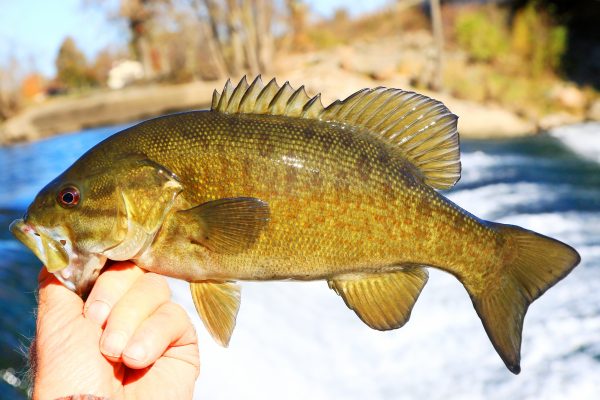 Due to the conservation and restoration efforts of private and public partners and landowners, natural reproduction of trout, primarily Brown and Rainbow Trout, has been established to 19 segments of stream in the UIR. Some experts now believe that the entire UIR Watershed may be functioning as a coldwater system, with trout moving in and out streams and the UIR at various times of year.
Due to the conservation and restoration efforts of private and public partners and landowners, natural reproduction of trout, primarily Brown and Rainbow Trout, has been established to 19 segments of stream in the UIR. Some experts now believe that the entire UIR Watershed may be functioning as a coldwater system, with trout moving in and out streams and the UIR at various times of year.
The Iowa DNR notes that along with the native Brook Trout, there are two species of sculpin represented whose presence indicates a high quality cold water stream. The American Brook Lamprey, Black Redhorse, and Burbot are threatened species found within the watershed (571 IAC 77.2(2) (2015)). Besides these three, there are an additional 18 fish species listed as species of greatest conservation need.
The economic impact of trout in the UIR Watershed, including the sensitive Brook Trout, is significant. In 2016, Trout Unlimited commissioned a study of the economic impact of trout fishing and stream restoration activities in the four-state Driftless Area, including the UIR Watershed, which has more miles of coldwater trout streams than any watershed in Iowa. TU notes that, “the purpose of the study was to estimate the economic impact of trout fishing and stream restoration activities, summarize information on angler demographics and opinions, and identify characteristics of a healthy “Trout Economy.”” The study measured “new spending in the region” that occurred “as a result of an event or feature such as trout streams, as opposed to spending that would have occurred anyway”. Additional information about the economic impact of trout in the Driftless Area can be found here.
To find more information about fish species located in the Upper Iowa River Watershed check out the Iowa DNR Biological Monitoring and Assessment Database.
2.4.3
Breeding Birds

Photo Courtesy Larry Reis
The Upper Iowa River Corridor and many of the natural areas in the UIR Watershed support nesting and migratory birds. The Iowa Breeding Bird Atlas II documents the specific species of hundreds of birds from over a dozen separate small land inventory areas in the UIR Watershed, defined as blocks. This inventory of birds was completed between 2008 and 2012 and provides a look at the common as well as the threatened and endangered bird species found in the watershed. Specific species and information about locations of species in association with specific blocks or counties can be found Here. The eastern areas of the UIR watershed provide particularly significant birding habitat. Public lands near the mouth of the UIR are recognized as a State Important Birding Area and are within a few miles of a Globally Important Birding Area. More information about the significance and location of Important Birding Areas can be found Here.
2.4.4
Algific Talus Slopes
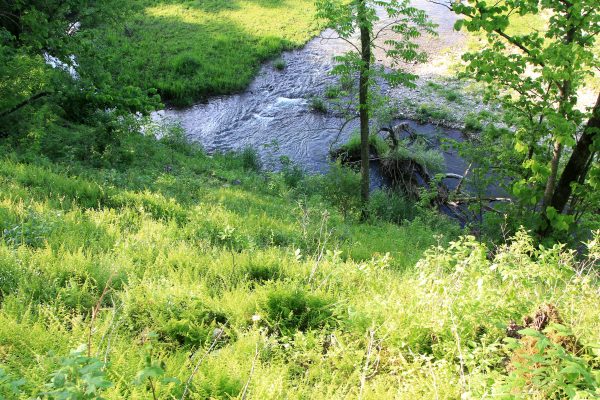
Photo Courtesy Larry Reis
One of the more unique ecosystems in the UIR Watershed, which are themselves endangered, are the Algific Talus Slopes. Although the exact number and locations are not reported due to their fragile state, US Fish and Wildlife Service personnel report as many as 50 Algific Talus Slopes of various sizes and conditions exist in the UIR Watershed. These small ecosystems have several distinguishing characteristics including cold or chilling (algific) air, which flows over sloping rock fragments (talus) situated on north facing slopes with shallow soils. The temperatures on these slopes are maintained within a narrow range year-round, between 15 and 52 degrees Fahrenheit, in a Northeast Iowa climate where air temperature fluctuates wildly from -20 to 100 degrees Fahrenheit. The presence of flora and fauna on these slopes is rare for the latitude in which they exist and include species that are not typically found in Iowa such as Yews, Northern Monkshood, Balsam fir, showy lady’s slipper and golden saxifrage, and even Pleistocene snail, which are considered relic species from the Pleistocene Era. The rare species on these slopes thrive because of the unique topographic and geologic conditions that create micro-climates on these slopes.
Algific Talus Slopes also have specific hydrologic characteristics. Rainwater and stormwater runoff flow into the sinkholes and limestone bedrock fissures on the hilltops above the slopes. The water gathers and freezes underground during winter months. During summer months, air flows from above through the system, blowing over the ice and cooling before exiting out the rocky, northern facing hillsides. Thus the cool soil and air that support cold climate flora and fauna. Small springs typically emerge on and/or at the base of the slopes.
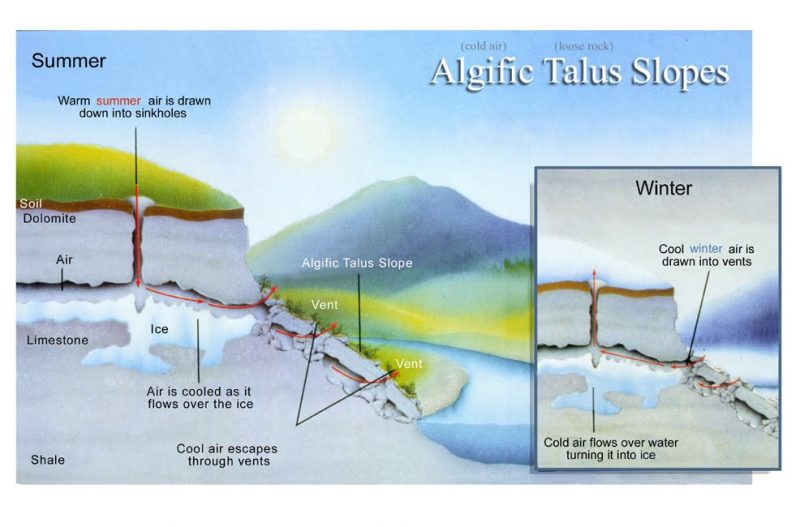
Algific Talus Slopes have fragile ecosystems and as a result their locations in the UIR Watershed, or anywhere in the four-state Driftless Area are not widely publicized. However, there are good videos that provide additional information. Mississippi Valley Conservancy Executive Director, Tim Jacobson, explores an Algific Talus Slope in Wisconsin in this video.
He notes that they are, “a system of subterranean ice caves that vent cold air onto a hillside, allowing Ice Age flora and fauna to thrive long after the Ice Age ended. In other words, it’s an ecosystem frozen in time.” The video provides an up-close look at the beautiful and endangered northern monkshood wildflower and Pleistocene snails that thrive in the microclimate produced by this rare geological formation.
